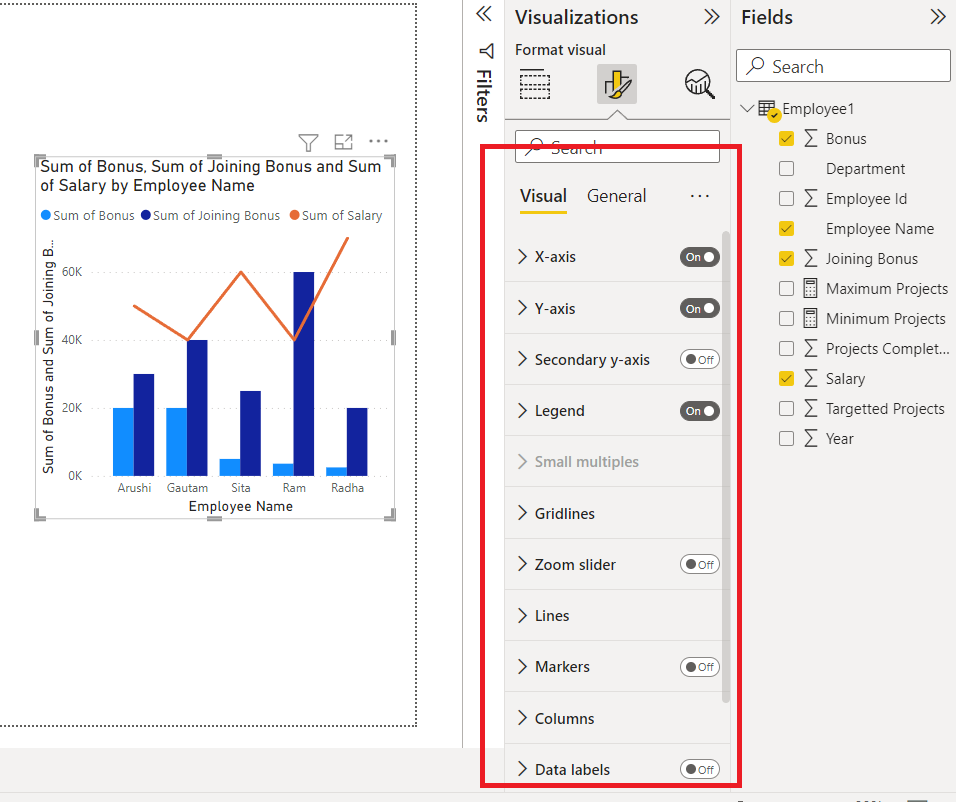BI for Innovation and Growth sets the stage for this enthralling narrative, offering readers a glimpse into a story that is rich in detail and brimming with originality from the outset. In today’s rapidly changing business landscape, organizations are increasingly turning to business intelligence (BI) as a catalyst for innovation and a driver for growth. By harnessing the power of real-time data, companies can streamline decision-making processes, foster creativity, and develop groundbreaking solutions that keep them ahead of the competition.
This exploration delves into the role of BI in enhancing organizational innovation, highlighting key strategies for leveraging data to drive growth, and addressing common challenges faced during BI adoption. With practical examples and case studies, we will uncover how successful enterprises are using BI tools to harness insights that propel their innovative endeavors.
The Role of Business Intelligence in Innovation

Business intelligence (BI) plays a pivotal role in driving innovation within organizations by transforming raw data into actionable insights. With the ever-evolving market dynamics and consumer preferences, organizations leverage BI to stay ahead of the curve, facilitating the development of innovative products and services that meet the demands of their clients while optimizing operational processes.Business intelligence tools empower decision-makers by providing comprehensive data analysis, predictive analytics, and visualization capabilities.
By analyzing historical data alongside current market trends, organizations can identify opportunities for innovation that may have otherwise gone unnoticed. Real-time data availability significantly enhances decision-making processes, allowing businesses to pivot quickly and adapt strategies for new projects, ensuring that innovation is not just reactive but proactive.
Impact of Real-Time Data on Decision-Making
The integration of real-time data into decision-making processes is crucial for fostering innovation. Organizations that utilize BI systems can access up-to-the-minute information that influences project planning and execution. This immediacy of data allows teams to react swiftly to market changes, customer feedback, and emerging trends, ensuring that innovation efforts are relevant and timely.Real-time data offers several advantages for innovative projects, including:
- Enhanced Responsiveness: Businesses can quickly adjust strategies based on the latest data insights, allowing for a more agile approach to innovation.
- Informed Risk Management: Access to current data enables organizations to assess risks more accurately and make informed decisions that mitigate potential setbacks in innovation initiatives.
- Improved Collaboration: Real-time data sharing across departments fosters collaborative innovation, where teams can work together efficiently, supported by a unified view of performance metrics.
- Customer-Centric Innovations: Understanding customer behaviors and preferences in real-time helps organizations tailor their innovative efforts to align with market needs, increasing the likelihood of success.
The impact of real-time data on innovation has been exemplified by companies like Amazon. Their sophisticated analytics tools analyze purchasing behaviors, enabling rapid adjustments to inventory and product offerings based on current consumer demands. This data-driven approach has led to the development of innovative services like Amazon Prime and personalized recommendations.
Understanding RMM and Automation Rules is essential for enhancing operational efficiency in IT management. These rules allow for streamlined processes and automated responses to various system events, reducing manual intervention. By leveraging these automation capabilities, businesses can significantly improve their response times and ensure their systems are always aligned with organizational goals.
Successful Companies Leveraging BI for Innovation
Numerous companies have successfully integrated business intelligence into their innovation strategies, demonstrating the transformative power of data-driven insights. Notable examples include:
- Netflix: By utilizing data analytics to track viewer preferences and trends, Netflix has been able to create original content that resonates with its audience, resulting in award-winning series and films that drive subscriptions.
- Coca-Cola: The company employs BI to analyze consumer data, enabling them to innovate new flavors and product offerings based on regional preferences and changing market dynamics.
- Procter & Gamble: Leveraging BI tools, P&G can analyze market trends and consumer insights, leading to innovations in product development and marketing strategies that cater to evolving customer needs.
These companies exemplify how integrating business intelligence into the innovation process not only enhances operational efficiency but also fosters a culture of continuous improvement and responsiveness to market changes.
Strategies for Leveraging BI for Growth
In today’s data-driven environment, businesses must harness the power of Business Intelligence (BI) to drive sustainable growth. BI provides valuable insights that can shape strategic decisions, streamline operations, and ultimately enhance profitability. Companies can utilize BI effectively by employing specific strategies that align with their growth objectives while measuring performance through key metrics.
To effectively leverage BI for growth, organizations must implement several strategies that enhance decision-making, optimize operations, and drive customer engagement. These strategies focus on using data analytics to identify market trends, customer preferences, and operational efficiencies. By adopting a proactive approach to BI, businesses can improve their responsiveness to market changes and enhance their competitive edge.
One of the pivotal advancements in IT management is Updating Software Remotely. This process not only saves time but also minimizes the disruptions that come with manual updates. By enabling remote updates, IT teams can ensure that all systems are secured and running the latest software versions without the need for physical presence, thus enhancing overall productivity.
Key Strategies for Implementing BI
The following strategies can significantly enhance a company’s ability to leverage BI for growth:
- Data Integration: Unifying data from various sources ensures a comprehensive view of business operations, allowing for more accurate analysis and insights.
- Real-Time Analytics: Utilizing real-time data analytics enables businesses to make timely decisions that can capitalize on immediate market opportunities.
- Customer Segmentation: Analyzing customer data allows for targeted marketing strategies that cater to specific segments, enhancing customer engagement and loyalty.
- Predictive Analytics: Implementing predictive modeling techniques can help forecast future trends, allowing businesses to anticipate changes and adapt strategies accordingly.
- Performance Dashboards: Creating interactive dashboards provides stakeholders with easy access to key metrics, improving transparency and facilitating data-driven decision-making.
Understanding which metrics are critical for measuring growth is essential for any business looking to leverage BI effectively. These metrics provide insights into performance and help identify areas for improvement.
Essential BI Metrics for Measuring Growth
The following BI metrics are crucial for tracking growth and evaluating the effectiveness of business strategies:
- Revenue Growth Rate: This metric measures the percentage increase in revenue over a specified period, indicating overall business performance.
- Customer Acquisition Cost (CAC): Analyzing the cost associated with acquiring new customers can help in assessing marketing effectiveness and profitability.
- Customer Lifetime Value (CLV): Understanding the total revenue expected from a customer during their relationship with the company helps guide retention strategies.
- Net Promoter Score (NPS): This metric gauges customer satisfaction and loyalty, offering insights into potential growth through referrals.
- Churn Rate: Monitoring the rate at which customers stop doing business with the company can help identify issues in customer satisfaction and retention efforts.
Real-life applications of BI show how it has been instrumental in driving business expansion. Case studies illustrate the transformative impact of BI on various industries, showcasing practical strategies and outcomes.
Case Studies Demonstrating BI as a Growth Driver
Numerous organizations have successfully utilized BI to fuel their growth trajectory. For instance:
Example 1: A leading retail chain implemented BI tools to analyze purchasing patterns and inventory levels. By optimizing stock levels based on predictive analytics, they reduced overhead costs by 15% and increased sales by 20% over two quarters.
Example 2: A financial services firm adopted a BI platform to enhance customer segmentation analysis. By targeting high-value segments with personalized marketing campaigns, they achieved a 25% increase in customer engagement and a 30% rise in new client acquisitions.
Example 3: A manufacturing company utilized BI for supply chain optimization. By analyzing data from suppliers and production schedules, they improved efficiency, resulting in a 10% reduction in operational costs while simultaneously increasing production capacity by 20%.
Through these strategies, metrics, and illustrative case studies, it becomes evident that leveraging Business Intelligence effectively can be a game-changer for organizations seeking growth in competitive markets.
Overcoming Challenges in BI Adoption: BI For Innovation And Growth

Implementing Business Intelligence (BI) systems can significantly enhance an organization’s decision-making capabilities and overall efficiency. However, the journey towards successful BI adoption is often fraught with challenges that can impede progress. Understanding these challenges and developing effective strategies to overcome them is essential for organizations aiming to leverage BI for innovation and growth.Many organizations face various challenges when implementing BI systems.
These include data quality issues, resistance to change from employees, lack of executive support, and insufficient training on new tools. Each of these obstacles can hinder the effective utilization of BI systems and stall the expected benefits. Addressing these challenges is critical to ensure that BI becomes an integral part of the organizational culture rather than just a technological implementation.
Identifying Common Challenges in BI Implementation, BI for Innovation and Growth
Understanding the common challenges can help organizations prepare for and mitigate potential issues. The key challenges often encountered include:
- Data Quality and Integration: Poor data quality leads to unreliable insights. Combining data from various sources often presents integration challenges.
- User Resistance: Employees may resist adopting new technologies due to fear of change or lack of understanding.
- Lack of Leadership Support: Without strong advocacy from leadership, BI initiatives may lack the necessary resources and prioritization.
- Insufficient Training: Users may struggle to use BI tools effectively without adequate training, leading to underutilization of the system.
Enhancing User Adoption and Data Literacy
To overcome these challenges, enhancing user adoption and data literacy is essential for maximizing the effectiveness of BI systems. Organizations can implement several strategies including:
- Comprehensive Training Programs: Regular workshops and training sessions can bolster user confidence and skills in utilizing BI tools effectively.
- Data Literacy Initiatives: Developing a culture of data literacy encourages employees to engage with data, thereby fostering a data-driven mindset.
- Executive Sponsorship: Active involvement from leadership can motivate teams and highlight the strategic importance of BI tools.
- Feedback Mechanisms: Establishing channels for user feedback allows organizations to continuously improve BI systems based on user experiences and needs.
Step-by-Step Guide for Overcoming Barriers
Implementing a systematic approach can help organizations overcome barriers to effective BI utilization. The following steps provide a clear path to successful BI adoption:
- Assessment of Current Capabilities: Evaluate existing data infrastructure and BI maturity to identify gaps and opportunities.
- Engagement with Stakeholders: Involve key stakeholders early in the process to ensure alignment and gather insights on user needs.
- Development of a BI Roadmap: Create a strategic roadmap that Artikels objectives, timelines, and resource allocation for BI implementation.
- Implementation of Tools: Select and deploy user-friendly BI tools that align with user capabilities and organizational needs.
- Continuous Monitoring and Support: Regularly monitor BI usage and offer ongoing support to address any emerging challenges or enhancements.
“A well-implemented BI system not only provides insights but also fosters a culture of data-driven decision-making within the organization.”
Future Trends in BI for Innovation and Growth

The landscape of Business Intelligence (BI) is rapidly evolving, driven by advancements in technology and the increasing demand for real-time insights in decision-making. Organizations are beginning to realize the potential of BI not just as a reporting tool, but as a strategic asset that fuels innovation and growth. As we look to the future, several emerging trends are set to reshape the BI ecosystem, integrate advanced technologies, and enhance organizational agility.One of the most significant trends is the integration of Artificial Intelligence (AI) and Machine Learning (ML) within BI platforms.
These technologies are poised to elevate BI capabilities, enabling organizations to harness vast amounts of data more effectively and derive actionable insights. With AI, businesses can automate data analysis, predict trends, and enhance decision-making processes through smart algorithms. This shift towards intelligent BI solutions is crucial for organizations aiming to stay competitive in a data-driven world.
Emerging Trends in BI Technology
As technology advances, several trends are emerging that will significantly influence BI’s role in fostering innovation and growth. These trends underscore the importance of adapting to new technologies and methodologies to remain relevant and competitive.
- Self-Service BI: Empowering users to create reports and dashboards without relying on IT departments enhances agility and responsiveness to market changes.
- Augmented Analytics: The use of AI to automate data preparation, insights generation, and visualization streamlines the analytical process, making it accessible to non-technical users.
- Cloud-Based BI: The shift to cloud solutions offers scalability, flexibility, and cost-efficiency, allowing organizations to analyze data from anywhere, anytime.
- Embedded BI: Integrating BI tools directly into business applications provides contextual insights, making data-driven decision-making part of everyday workflows.
- Real-Time Data Analytics: The demand for immediate insights is rising, leading to the development of technologies that allow for real-time data processing and analytics.
AI and Machine Learning Enhancements in BI
The advent of AI and ML technologies is transforming the capabilities of BI platforms. These innovations are not just enhancing data processing speeds but are also improving the precision of insights derived from data analysis.Machine Learning algorithms can identify patterns and correlations in data that traditional BI tools may miss. For instance, organizations can utilize predictive analytics to forecast customer behavior, optimize inventory management, and refine marketing strategies.
An example of this is Netflix, which employs complex algorithms to analyze viewer preferences and recommend content, directly impacting its growth and user engagement.
“The integration of AI and ML within BI systems allows businesses to transition from reactive decision-making to proactive strategies based on predictive insights.”
Comparative Analysis of Traditional BI Methods and Modern Approaches
To understand the transformative impact of new BI technologies, it is vital to compare traditional BI methods with modern approaches that incorporate AI and ML. The following table summarizes key differences:
| Aspect | Traditional BI Methods | Modern BI Approaches |
|---|---|---|
| Data Processing | Batch processing, often time-consuming | Real-time data processing with automation |
| User Accessibility | IT-dependent for report generation | Self-service capabilities for end-users |
| Insight Generation | Descriptive analytics only | Predictive and prescriptive analytics powered by AI |
| Scalability | Limited scalability with on-premises solutions | Highly scalable cloud-based solutions |
| Data Sources | Structured data sources primarily | Integration of structured, semi-structured, and unstructured data |
This comparison illustrates how modern BI approaches are better equipped to drive innovation and growth, enabling organizations to leverage data as a strategic asset in an increasingly complex business environment.